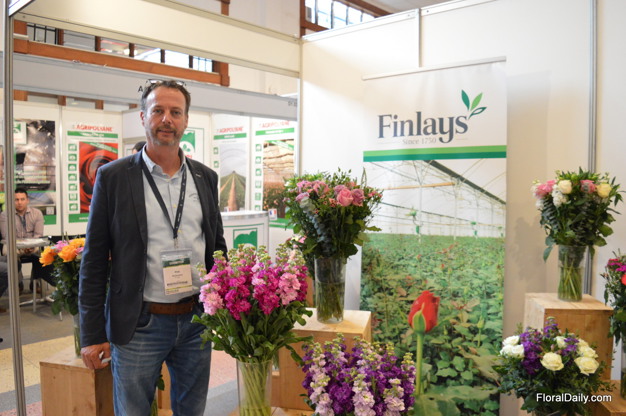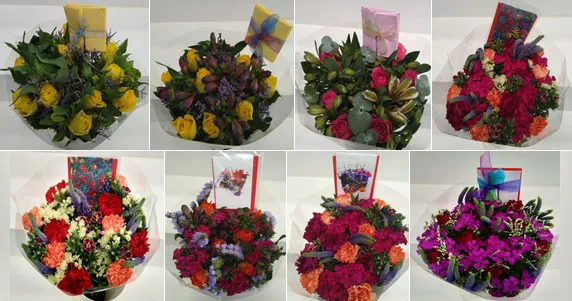"With the rose production in Kenya having increased, growers need to make sure they won't become interchangeable. Making bouquets is a way to secure their position", says Piet Kelderman, Commercial Manager at Finlays. This Kenyan rose farm that produces a large variety of flowers at their three farms (two in Kericho and one in Londiani) which together cover an acreage of more than 100 ha. Just two years ago, they started producing bouquets, and the demand for these 'packed at source' has increased sharply.

Piet Kelderman at the IFTEX 2019 in Nairobi, Kenya
Bouquets at source
"Besides diversification from the competition, we see that making bouquets at source is cheaper than doing it in Europe", says Kelderman. On top of that, many European countries and the UK are dealing with labor shortage. "Usually, Polish workers are making the bouquets in Europe, but due to the improving economy in Poland, many go back to their home country. As a result, it is harder to find workers for these kinds of jobs."
What's the challenge?
So, for these reasons, Finlays saw the opportunity to put something different on the market instead of straight bunches. And their broad assortment of flowers, including Roses, Dianthus Barbatus, Dianthus Aston Villa, Matthiola, Standard Carnations, Veronica’s, Eucalytus, Leather ferns, Grevilia, Photinia, Leucadendron and Gypsophila, also enabled them to do so. But making a good bouquet is not just putting some flowers together, it entails more than that, explains Kelderman. "The challenge is: every flower in the bouquet needs to be of high quality. If one flower in the bouquet does not meet the quality standards, the entire bouquet will be claimed."
And binding the bouquets is also an art in itself. "We've trained all our workers in the packing area, and for the spiralled bouquets, we have our own specialists who have mastered this skill."

Bouquets of Finlays (with hand-made cards)
Demand
Since Finlays started packing bouquets at source, they have seen the demand increase sharply. "Besides the fact that it is cheaper for the importer to buy the 'packed at source bouquets', they are also fresher. Fewer hands touch the flowers." Finlays mainly sells directly to countries all over the world (among others Australia, China, Japan, the Middle East, Russia and Europe), but the main demand for bouquets comes from Germany, Norway and the UK.
Designs of the bouquets
Who designs the bouquet? According to Kelderman, the designs are made together with the customers. "We often make a design and send samples, but we also send all our products to our client so that their own design department can work on different designs as well."
For more information
James Finlay (Kenya) Limited
Piet Kelderman
Email: [email protected]
www.finlays.net
